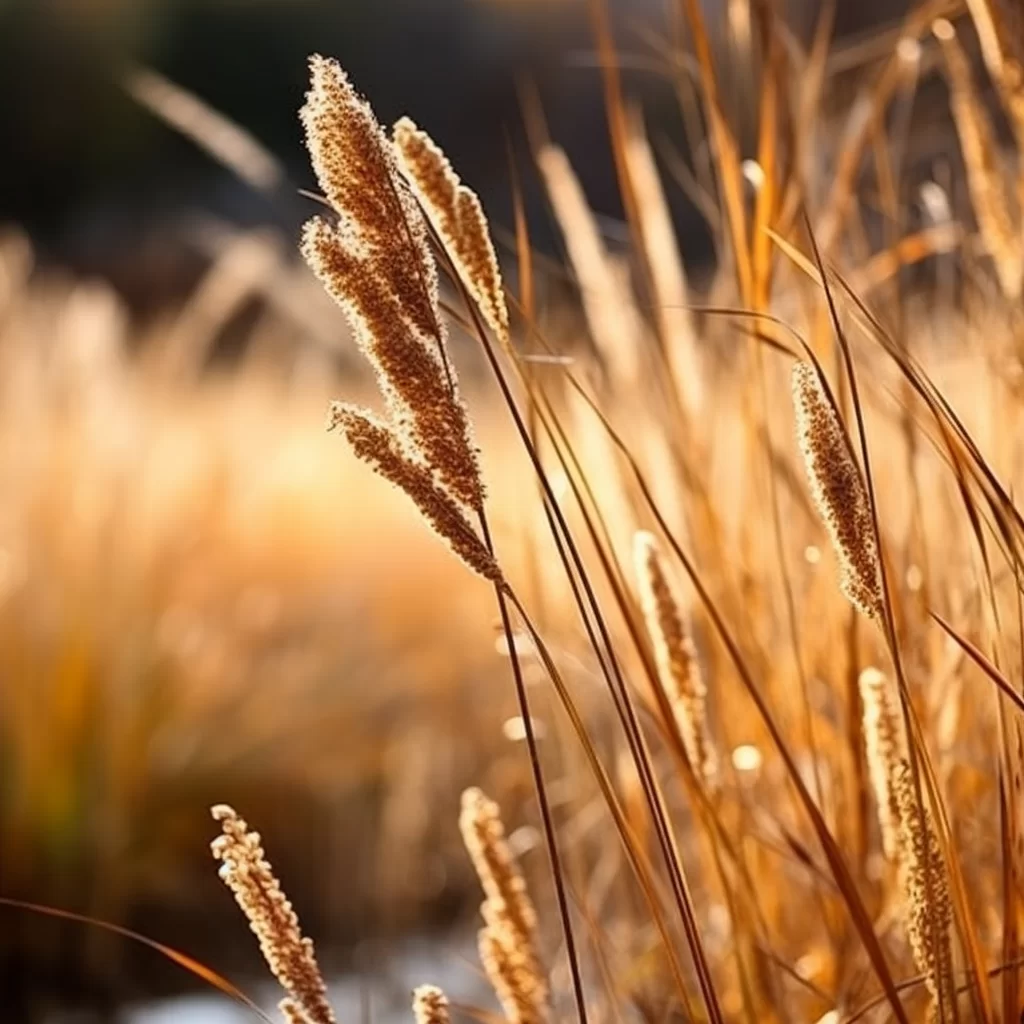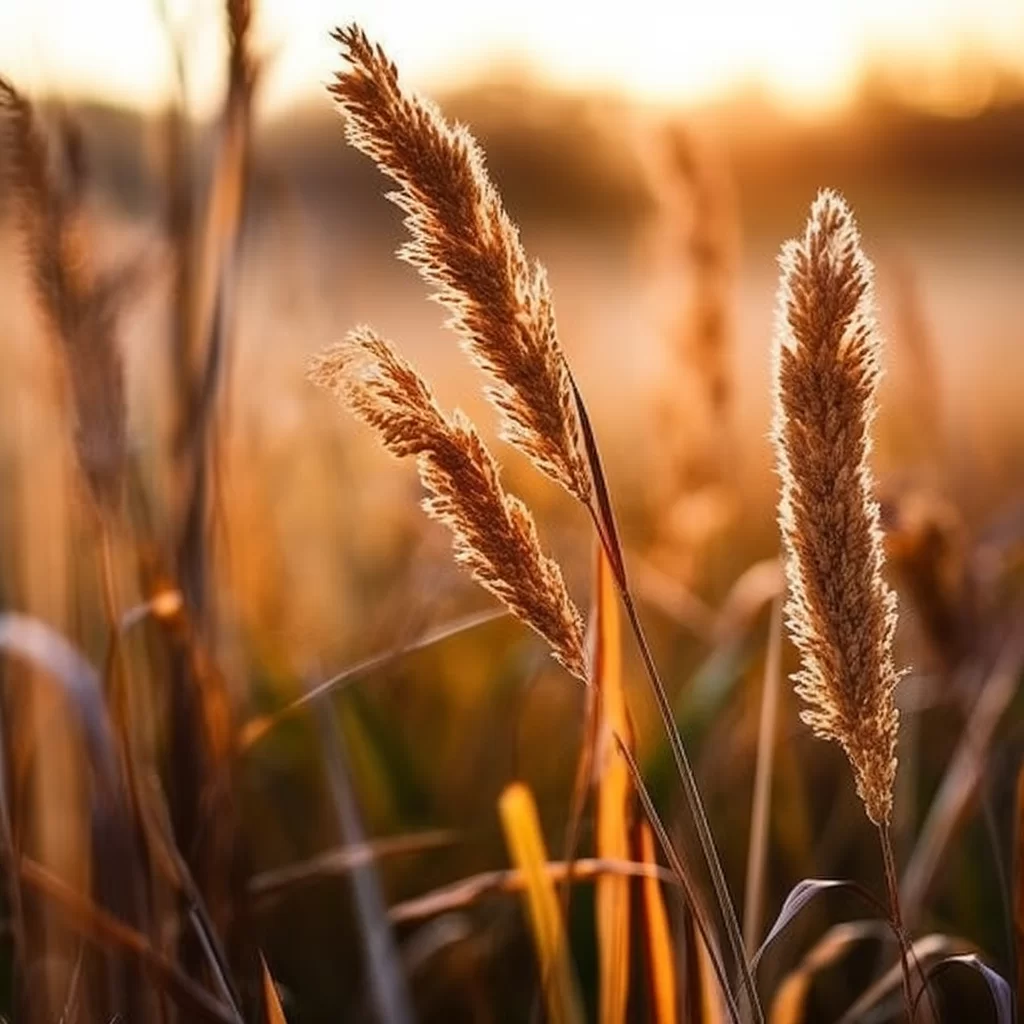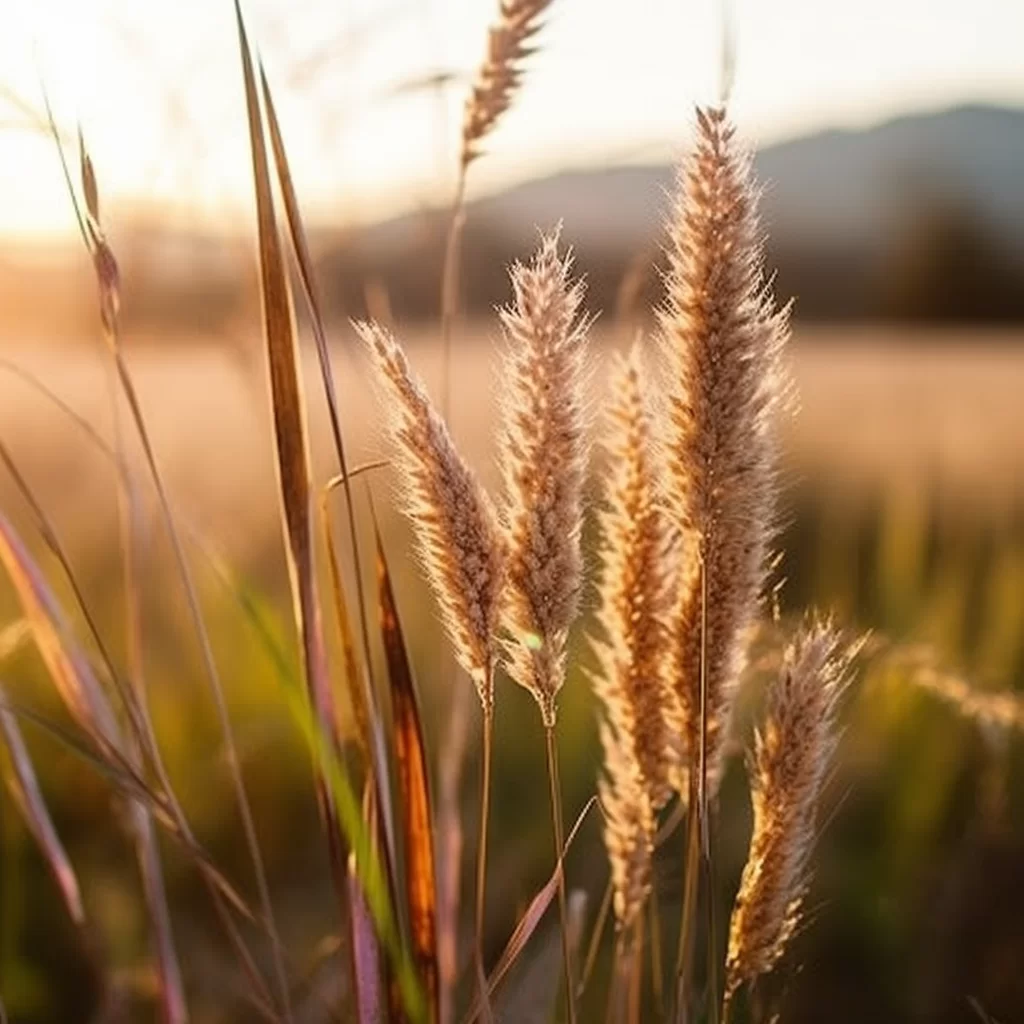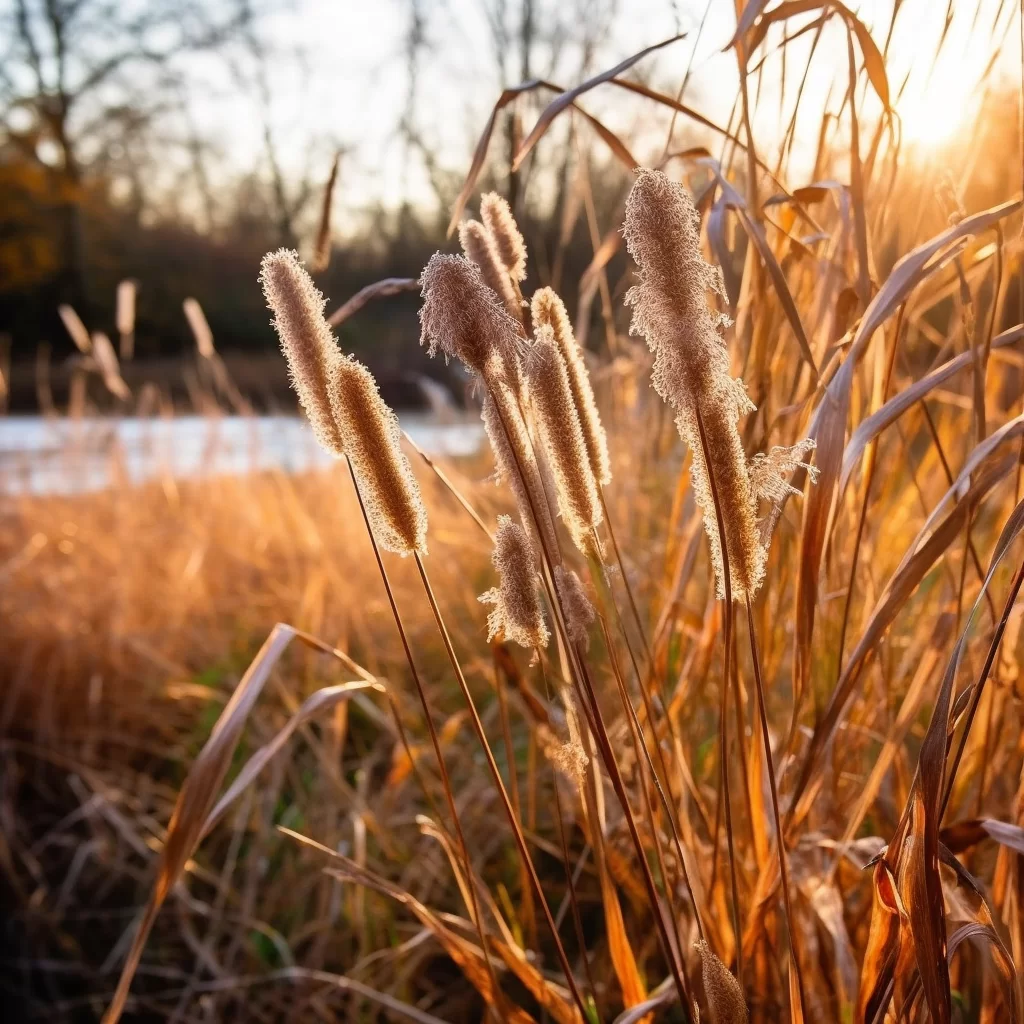Story of Day :
The Bulrush Plant: A Complete Guide and Care Tips
If you’ve wandered through a marsh or swamp, you may have come across a peculiar plant that looks like a long, thin stick poking out of the water – that’s the bulrush.
Although it may not be the most visually appealing plant in its habitat, bulrushes play an essential role in their ecosystem.
They thrive in wetlands and provide shelter and food for various species of birds and aquatic animals.Bulrushes are also known to help purify water by absorbing excess nutrients and pollutants from the soil.
Additionally, they prevent soil erosion by stabilizing sediment with their roots.
Overall, this interesting plant may not turn heads with its appearance but is vital to maintaining balance within wetland ecosystems.
What is a Bulrush?
Bulrushes are fascinating plants that thrive in wetlands and marshy areas.
They belong to the sedge family, which includes other grass-like plants such as papyrus and water chestnut.
Although there are several species of bulrushes, they share many similarities in their appearance and behavior.
For instance, they all have long slender stems with spikelets at the tip that resemble a bottlebrush.
Additionally, bulrushes have a unique way of growing in dense clumps that provide shelter for various aquatic creatures like insects and small fish. Apart from their physical attributes, bulrushes play an essential role in maintaining healthy ecosystems.
Apart from their physical attributes, bulrushes play an essential role in maintaining healthy ecosystems.
They help filter pollutants out of water sources by absorbing excess nutrients such as nitrogen and phosphorus via their roots.
This function is vital because it prevents toxic algae blooms from forming, which can be harmful to wildlife and humans alike.
Furthermore, bulrushes prevent soil erosion by anchoring themselves firmly into the muddy substrate of wetland habitats through underground rhizomes or runners’ network systems.
Overall, these versatile plants contribute significantly to the biodiversity found within our planet’s wetlands while providing numerous ecological benefits that we can all appreciate!
- They grow in shallow water or moist soil.
- They have long stems that can grow up to 10 feet tall.
- Their leaves are narrow and grass-like.
- They produce brown-colored flowers or seed heads at the top of their stems.
Bulrushes and cattails are two plants that often get mixed up because they look alike when seen from a distance.
However, upon closer inspection, it’s easy to spot the differences between the two.
Cattails have thicker stems and broader leaves than bulrushes.
While both plants grow in wetlands and marshy areas, cattails tend to thrive in shallower water compared to their bulrush counterparts.The stem thickness and leaf breadth of these plants play an essential role in their identification as they are among the most prominent characteristics of each plant.
These variations not only help distinguish them from one another but also provide unique ecological benefits suitable for different environments.
So next time you’re out exploring nature around wetlands or marshy areas, make sure you take a closer look at these seemingly identical plants – you’ll be surprised by how much more there is to discover!
 If you’re looking to grow bulrush plants, there are a few care tips that can help ensure their successful growth.
If you’re looking to grow bulrush plants, there are a few care tips that can help ensure their successful growth.
First and foremost, it’s important to plant them in a location with plenty of sunlight.
Bulrush plants also require moist soil and can even survive in standing water, making them an ideal choice for wetland gardens or near ponds and streams.
They should be planted in the spring or early summer when the soil is warm enough for germination.To keep your bulrush plants healthy, it’s essential to provide regular watering throughout their growing season.
If they’re planted in an area with standing water, they likely won’t need additional watering unless there is a drought or prolonged dry spell.
Additionally, pruning can help maintain the size and shape of your bulrush plants while removing any dead or diseased foliage.
With proper care and attention, your bulrush plants can thrive and add unique texture to your landscape design.
Growing bulrush plants may seem like a daunting task, but it can be an enjoyable and rewarding experience for those interested in gardening.
To successfully grow these plants at home or in your garden pond, there are some essential care tips to keep in mind.
First and foremost, ensure that you provide your bulrushes with adequate sunlight exposure and nutrient-rich soil.
Additionally, make sure to water them regularly and avoid over-watering as this could lead to root rot.
It’s also crucial to prune back any dead leaves or damaged stems regularly.When it comes to growing bulrushes in your garden pond, the process may differ slightly from traditional planting methods.
In this case, the key is ensuring that the roots of the plant have access to sufficient oxygen levels as they grow underwater.
One way you can achieve this is by using a specially designed aquatic planting basket filled with gravel or aquatic soil placed directly on the pond’s bottom surface rather than burying it underground where there is limited access to oxygen.
With these care tips in mind, anyone interested in gardening can successfully grow beautiful bulrush plants right at home!
 When it comes to plants, sunlight plays a vital role in their growth and development.
When it comes to plants, sunlight plays a vital role in their growth and development.
While some plants require direct sunlight for several hours a day, others can thrive in lower light conditions.
The amount of sunlight needed by different types of plants depends on factors such as their species, age, and location.
For instance, indoor houseplants usually require less sunlight compared to outdoor plants because they are shielded from direct sun exposure by glass windows or walls.
On the other hand, vegetables and fruits typically need several hours of full sun exposure each day to produce high yields.The way that plants utilize the energy from the sun also varies depending on their type.
Some plants use photosynthesis to convert light into energy while others undergo photoperiodism where they rely on daylight length cues to regulate their flowering cycles or dormancy periods.
Understanding your plant’s specific needs when it comes to sunlight is crucial if you want them to grow healthy and strong.
By providing enough or adequate light for your plant’s requirements will ensure that they get all the necessary nutrients required for growth and healthy development while avoiding any adverse effects caused by overexposure or underexposure to sunlight during different growing stages.
If you’re thinking about planting bulrush plants in your garden, it’s important to choose the right location.
Bulrushes are sun-loving plants that require a lot of direct sunlight to grow and thrive.
In fact, they need at least six hours of sunlight every day to reach their full potential and produce healthy, vibrant foliage.
So when selecting a spot for your bulrushes, look for an area that receives plenty of sunshine throughout the day and avoid places that are shaded by trees or buildings.To help your bulrushes make the most of the sunlight they receive, you may want to consider other factors as well.
For example, you can plant them in well-draining soil that won’t become waterlogged after rainstorms.
You can also add organic matter like compost or peat moss to improve soil quality and encourage strong root growth.
With proper care and attention, your bulrush plants will thrive in their sunny new home and provide beauty and interest to your outdoor space for years to come. Soil conditions play a crucial role in determining the health of plants and crops.
Soil conditions play a crucial role in determining the health of plants and crops.
The quality of soil affects the growth, yield, and nutrient content of crops.
Different types of soils have varying characteristics that may either aid or hinder plant growth.
For instance, clay soils tend to retain water for longer periods than sandy soils.
This characteristic makes them suitable for growing crops that require more moisture such as rice and sugarcane.Moreover, the pH level of soil affects how nutrients are absorbed by plants from the soil.
A balanced pH level is essential for optimal plant growth; however, this can be challenging to achieve in certain types of soils such as saline and alkaline soils.
Soil conditions can also determine whether a particular crop can thrive in a particular area or not.
Farmers often test their soil before planting any crop to ensure that it has all the necessary nutrients required for optimal crop production.
In conclusion, taking care of soil conditions is vital in ensuring healthy crops growth which ultimately leads to increased yields and higher food production levels
Bulrushes are a type of plant that thrives in soil that is moist and has an ample supply of organic matter.
As such, if you are looking to cultivate these plants in your yard or garden, it is essential to ensure that the soil conditions meet their specific needs.
In addition, if you plan on planting bulrushes in a pond or wetland area, you must take into consideration the depth of the water.
It is recommended that the water should not exceed 1 to 2 feet deep as this will help create ideal growing conditions for these hardy plants.In conclusion, understanding the growing requirements for bulrushes is vital for successfully cultivating these plants.
Ensuring that they are planted in soil with high organic content and watering them regularly will help them thrive and grow strong.
Additionally, if you’re planting these beauties near a pond or wetland area, be mindful of how deep the water should be as this can make all the difference when it comes to their overall health and growth potential.When it comes to watering your plants, there is no one-size-fits-all rule.
The frequency of watering depends on various factors such as the type of plant, soil composition, weather conditions, and the container size.
Generally speaking, plants require more frequent watering in hot and dry climates compared to cooler and humid environments.
Similarly, potted plants tend to dry out faster than those planted in the ground.To determine when it’s time for another round of watering, you can perform a simple test by sticking your finger an inch or two into the soil.
If it feels dry at that level, then your plant needs water.
Alternatively, you can use a moisture meter that gives accurate readings on soil moisture levels.
Remember not to overwater your plants as this can lead to root rot and other issues.
By understanding how often to water different types of plants based on their unique needs and environmental factors – you’ll ensure they thrive!
Bulrush plants are fascinating species that have adapted to wetland environments where water is abundant.
These plants are unique in their ability to thrive in moist soil without the need for regular watering.
This characteristic makes them a fantastic choice for those looking to create an aquatic or marshy environment in their gardens or ponds.
However, it’s important to note that if you’re growing bulrush plants on land, you’ll need to keep the soil sufficiently hydrated, as they still require moisture and can’t survive under dry conditions.If you’re interested in cultivating bulrushes on land, it’s essential to maintain a careful balance of moisture levels within the soil.
While these plants don’t necessarily require frequent watering like other species, they still need enough moisture around their roots to flourish properly.
So be mindful of how often and how much water you give them – too little will cause them stress and eventually lead to stunted growth or death; while too much could lead to root rot and other issues that may compromise your plant’s overall health.
In sum, while bulrushes may seem low maintenance due to their innate preference for wet areas, it’s necessary always carefully monitor your plant’s living conditions if grown on land!Fertilization is a crucial biological process that leads to the formation of new life.
It occurs when the sperm cell from a male unites with an egg cell from a female, resulting in the formation of a zygote.
This process typically takes place inside the female’s body, either in her reproductive tract or within an external environment.
Once fertilization has occurred, the zygote begins to divide and develop into an embryo which ultimately grows into a fetus.Fertilization can occur through natural means or through assisted reproductive technologies such as in vitro fertilization (IVF).
In natural fertilization, millions of sperm cells are released by the male during sexual intercourse in hopes that at least one will successfully penetrate and fertilize an egg.
However, only one sperm cell is needed for successful fertilization to occur.
Fertilization not only initiates embryonic development but also determines many physical traits such as hair color, eye color and genetic predispositions for certain diseases.
Bulrushes are a type of wetland plant that have adapted to thrive in nutrient-rich environments.
They grow in areas with plenty of water, such as marshes and swamps, where their roots can absorb nutrients from the soil and the surrounding water.
Because they are so well-adapted to their environment, bulrushes do not need additional fertilization from humans to grow successfully.
Instead, they rely on natural processes like decomposition and nutrient cycling within their ecosystem to get the nutrients they need.Despite being low-maintenance plants, bulrushes play an important role in maintaining healthy ecosystems.
They provide habitats for small animals like frogs and birds, filter pollutants out of waterways, and help prevent erosion by stabilizing soil with their roots.
Their ability to thrive without human intervention shows how nature has evolved over time to create sustainable systems that work together harmoniously without outside interference.Bulrush plants are a vital component of many ecosystems across the world.
These plants are known for their ability to absorb excess nutrients and pollutants from the surrounding environment, making them an essential part of water purification systems.
In addition, bulrushes provide crucial shelter and nesting sites for various types of wildlife, including birds, insects, and even small mammals.
These creatures rely on bulrushes as a source of food as well since they produce seeds that serve as a significant food source for many animals.Moreover, bulrush plants play an essential role in stabilizing soil and preventing erosion in wetland areas.
Their dense root systems trap sediment and slow down water flow during floods or heavy rains.
This results in the retention of nutrients and organic matter within the wetland ecosystem that would otherwise be lost to other areas downstream.
The roots also help increase oxygenation levels in water bodies by releasing oxygen through their roots into the surrounding environment.In conclusion, bulrush plants have immense ecological significance due to their role in water purification systems, providing habitat for wildlife species, stabilizing soil structure and combating erosion while also increasing oxygenation levels within aquatic environments.
Protecting these vital plant species is critical to maintaining healthy ecosystems worldwide.
Bulrushes are often overlooked and dismissed as insignificant plants, but they actually play a vital role in sustaining their surrounding ecosystems.
These tall and slender plants grow along the edges of wetlands, marshes and other water bodies.
They act as natural filters, preventing soil erosion by stabilizing the banks of rivers or canals.
Bulrushes also absorb excess nutrients from runoff water, which helps improve water quality and prevent algal blooms that can damage aquatic habitats.Furthermore, bulrushes provide shelter to many species of insects, birds and mammals such as beavers that rely on these wetland habitats for survival.
Their stems provide nesting material for birds while their roots offer protection to fish fry from strong currents.
In addition to all these benefits, bulrushes are also used in various cultural practices including basket weaving and traditional medicine making them significant not only ecologically but culturally too.
The next time you come across a cluster of bulrushes near a riverbank or pond take a moment to appreciate their importance in supporting life around them!
Have you ever wondered where animals go when their natural habitats are destroyed by human activity? Habitat for Wildlife is an organization that strives to create new habitats for animals by restoring damaged ecosystems and conserving natural areas.
Through this work, they provide shelter, food, and breeding grounds for a variety of species that might otherwise struggle to survive in urbanized environments.Habitat loss is one of the biggest threats facing wildlife today.
By supporting Habitat for Wildlife, we can help protect vulnerable animal populations and ensure that future generations get to experience these incredible creatures in their natural habitat.
Whether it’s volunteering our time or donating funds, we can all play a part in creating a better world for both humans and wildlife alike.
Bulrushes offer a safe haven for numerous species of wildlife.
These tall aquatic plants provide shelter and habitat to a diverse range of creatures.
The leaves of the bulrushes are ideal nesting sites for birds, while the roots serve as egg-laying stations for fish.
Reptiles such as snakes and turtles also use these plants as sunbathing spots, soaking up the warm sunlight to regulate their body temperature.The significance of bulrushes in an ecosystem cannot be overstated.
They contribute immensely to biodiversity by providing crucial living spaces and sanctuaries for various animal species.
It is not uncommon to spot different kinds of birds flitting around the reeds or fish swimming among them in rivers or lakes where bulrushes thrive.
Additionally, reptiles like turtles and snakes benefit from these plants by using them as convenient platforms for basking purposes – they absorb sunlight which is essential in regulating their body temperature, improving digestion, boosting immunity levels amongst other benefits making this plant is vital for survival in wildlife habitats that rely on it for sustenance & security!
Purification of water is a process that removes contaminants and pollutants from water.
The main purpose of this process is to make water safe for consumption by removing harmful substances such as bacteria, viruses, chemicals, and other impurities.
The purification methods used vary depending on the source and quality of the water.
Some common methods include filtration, disinfection with chlorine or other chemicals, boiling, distillation, and reverse osmosis.
Water purification is essential for public health as contaminated drinking water can lead to serious illnesses such as cholera or typhoid fever.In addition to providing safe drinking water for humans, purified water is also necessary for various industrial processes such as manufacturing pharmaceuticals or electronics.
It is also important in agriculture where it may be used for irrigation purposes.
However, whilst purified drinking waters have become more accessible over time due to technological advances; it has been highlighted that access to clean drinkable waters around the world remains a concern in many areas – largely due socio-economic factors which prohibit investment into infrastructure needed – meaning that there’s still much work required across the globe when it comes to ensuring everyone has access pure clean drinking waters (something many people take completely take for granted).
Bulrushes are a type of wetland plant that can be found in ponds and streams.
These plants have a remarkable feature which is their ability to purify water by absorbing excess nutrients from nearby farms or runoff fertilizer that enters the water system.
A lot of farmers use fertilizers on their fields, which contain high levels of nitrogen and phosphorous, two elements that can cause harmful algae blooms in water bodies if they leach into them.
When bulrushes absorb these nutrients, they help prevent these unwanted blooms from occurring and maintain healthy ecosystems.Having bulrushes around ponds or streams is an excellent way to keep the aquatic environment clean and healthy for both humans and wildlife alike.
They act as natural filters by removing pollutants such as nitrogen and phosphorous, which can be detrimental to the health of aquatic organisms when present in excess amounts.
Without these plants, natural bodies of water could become breeding grounds for harmful algae blooms or even toxic chemicals that could affect human health negatively.
Therefore it’s essential always to consider having bulrushes around aquatic environments whenever possible as they offer numerous benefits beyond just being aesthetically pleasing additions to landscapes but also serve an important ecological function in maintaining clean water systems.
Conclusion:
In conclusion, bulrush plants may not be showy plants but are necessary for providing habitat for wildlife species while purifying surrounding waters by absorbing excessive nitrogen which helps prevent eutrophication; therefore ensuring healthy aquatic habitats.
We hope this article has provided valuable insights on how to care for these unique plants while appreciating their importance within our ecosystem.